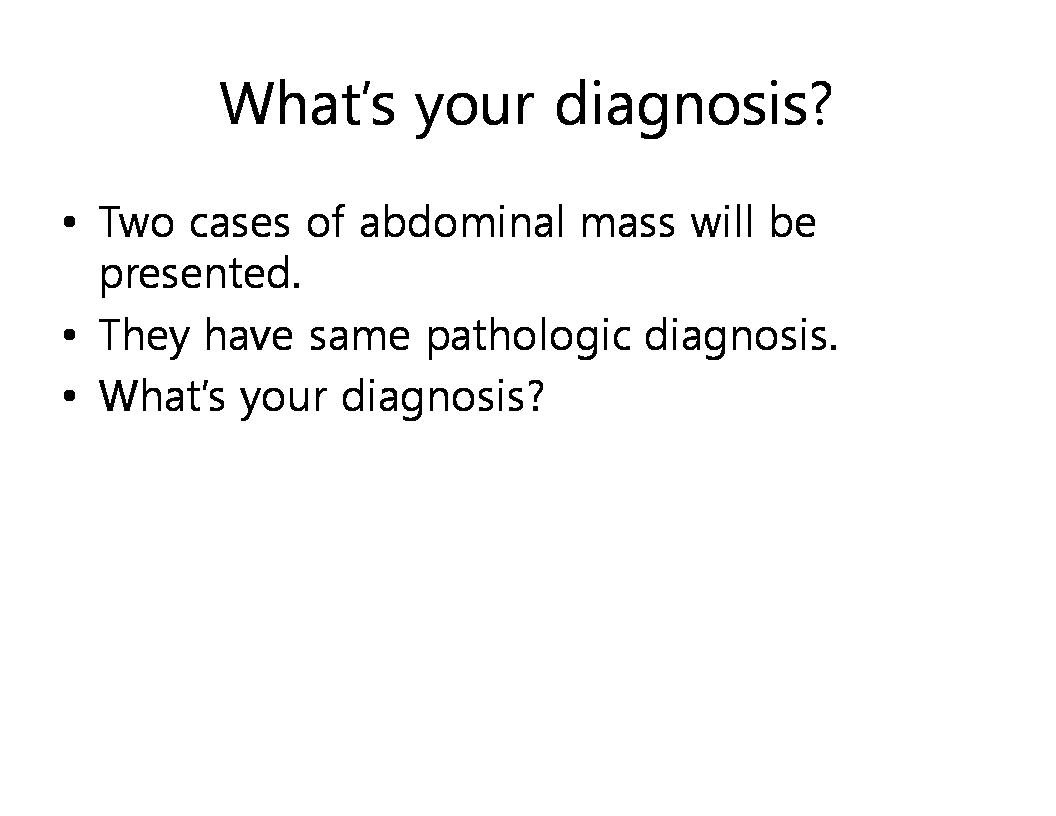List of the Quiz
| About Author | |
| Authors | Shin Yong Moon |
| Institution | Asan Medical Center |
| cjimage@amc.seoul.kr | |
| About Case | |||
| Chief complaint or Title |
Abdominal mass | ||
| Age | 75 | Sex | M |
| Difficulty | For resident, For specialist | ||
| Modality | CT | ||
| Case Figures | |||||||||
|
|||||||||
| Questions | ||
| What is your diagnosis of retroperitoneal mass |
| Answer | |||
| Diagnosis | 3 Liposarcoma | ||
| Comments | Answer 3. Liposarcoma 영상소견에서 뚜렷한 Case A: DEDIFFERENTIATED LIPOSARCOMA WITH 2) pancreas parenchyma. and distal : - The CDK4, ( + ); S-100,
Case B
Cut MALIGNANT DEDIFFERENTIATED
Liposarcoma is the most common primary
Dedifferentiated liposarcoma(DDL) is a DDL is a bimorphic neoplasm in which a So on CT, Adipose tissue (below 30 HU),
Conclusion Dedifferentiated liposarcomas present |
||
| References | Hong SH, Kim KA, Woo OH, et al. Dedifferentiated liposarcoma of retroperitoneum: spectrum of imaging findings in 15 patients. Clin Imaging. 2010;34(3):203-210 Song T, Shen J, Liang BL, et al. Retroperitoneal liposarcoma: MR characteristics and pathological correlative analysis. Abdom Imaging. 2007;32(5):668-674. |
||
| Keywords | Retroperitoneum, Liposarcoma, | ||
| Attachment File | - | ||
Number of Applicants : 32
| Correct Answer | 7 |
| 국제성모병원 | 강건우 |
| 서울아산병원 | 김동환 |
| 서울대병원 | 김세형 |
| 국군양주병원 | 김정우 |
| 서울아산병원 | 박호영 |
| 고대구로병원 | 이세영 |
| 고려대학교 구로병원 | 홍선 |




